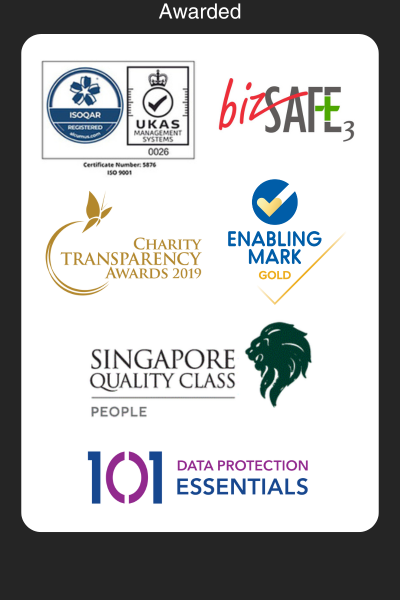In this continuing segment on complementary and alternative treatments, we extract the facts from the panacean promises of holistic and natural remedies.
Text: Flora Yong, Senior Nurse Manager, Cancer Education & Information Service,National Cancer Centre Singapore;
This article is reproduced from “A Guide For People With Cancer – Complementary And Alternative Medicine”, published by the National Cancer Centre Singapore (last updated in June 2006). Copyright © National Cancer Centre (S). All rights reserved.
Alternative Systems of Medical Practice
These are healing systems and beliefs that have evolved over time in different cultures and parts of the world. Some examples are:
- Ayurvedic medicine: A system from India emphasising balance among body, mind, and spirit.
- Chinese medicine: Base on the view that health is a balance of two forces called ‘yin’ and ‘yang’. Acupuncture is a common practice in Chinese medicine that involves stimulating specific points on the body to promote health, or to lessen disease symptoms and treatment side effects.
- Homeopathy: Uses very small doses of substances to trigger the body to heal itself.
- Naturopathy: Uses different methods that help the body naturally heal itself.
Manual Healing Methods or Manipulative and Body-Based Practices
Manipulative and body-based methods in complementary and alternative medicine (CAM) are based on manipulation and/or movement of one or more parts of the body. Some examples include chiropractic or osteopathic manipulation, and massage. Manipulative and body-based practices focus primarily on the structures and systems of the body, including the bones and joints, the soft tissues, and the circulatory and lymphatic systems. These are based on working with one or more parts of the body. Some examples are:
- Massage: Manipulation of tissues with hands.
- Chiropractic care: A type of manipulation of the joints and skeletal system.
- Reflexology: Using pressure points in the hands or feet or special tools to affect other parts of the body.
Pharmacological or Biologically Based Practices
Pharmacological or biologically based therapies in CAM include but are not limited to substances found in botanicals, animal derived extracts, vitamins, minerals, fatty acids, amino acids, proteins, prebiotics and probiotics, whole diets, and functional foods. These include dietary supplements and herbal products. Some examples are:
- Vitamins
- Herbs
- Foods
- Special diets
A note about nutrition: It is common for people with cancer to have questions about different foods to eat during treatment. Yet it is important to know that there is no one food or special diet that has been proven to control cancer. Too much of any one food is not helpful, and may even be harmful.
Herbal Medicine
Herbal medicine is a booming industry. The use of herbs and plants to treat medical conditions dates back thousands of years. More than 120 commonly prescribed drugs are derived from plant sources. Cancer drugs such as Paclitaxel continue to show the usefulness of plants in anti-cancer treatment.
The interest in herbal remedies stems from the use of “natural” products and to avoid the side effects and toxicities of more conventional medication. However, “natural” does not necessarily mean “safe”. Herbs taken in wrong dosages or by people with conditions for which their effects are contraindicated can cause serious side effects and even death.
For example, ephedra (or麻黄 ma huang) contains ephedrine that can cause headache, dizziness, palpitations, and possibly strokes and heart attacks. The consumer must interpret claims made by manufacturers and prescribers of herbal medicines carefully.
The safety of many herbs is unknown. Healthcare professionals need to be aware of the growing use of herbs by the general public to treat various ailments. Individuals who choose to use herbs for specific ailments are strongly advised to speak with healthcare professionals in order to evaluate any potential contraindications associated with medication that they may be taking or potential side effects of the herbs.
Treatments Focusing on Diet and Nutrition in the Prevention and Treatment of Chronic Diseases
Much has been written about diet and its effects on health and disease. Alternative or special diets have evolved out of concerns about more and more people eating saturated fat laden foods, nutrient-depleted foods and diets high in protein and carbohydrates. The optimum level for nutrients is controversial.
The Recommended Dietary Allowance (RDA) is designed to provide a basis for evaluating the diet of groups, not individuals.
The use of special diets should not be taken lightly or undertaken without expert guidance. The potential for negative consequences always must be a consideration. Some examples of alternative or special diets include:
- Vegetarian Diets: Focus on the practice of not consuming meat, fish or poultry. Some vegetarians eat eggs and dairy products. Research has shown that a properly followed vegetarian diet can reduce the risk of colon, breast, prostate and other forms of cancer, as well as heart disease and other illnesses. A 1989 study published in the American Journal of Clinical Nutrition reported that vegetarians eat more essential nutrients and absorb them better than non-vegetarians.
- Macrobiotic Diets: Macrobiotics by definition means “large life”. It is based on the Eastern philosophy of ‘yin’ and ‘yang’, which is incorporated into all aspects of the macrobiotic theory and lifestyle.
Taking responsibility for individual health through a more balanced, natural way of life is the goal of macrobiotics. The basic macrobiotic diet consists of 50%-60% whole cereal grains, 5% soup, 25%-30% vegetables, 10%-15% beans and sea vegetables, and 5%-10% fish, shellfish, seasonal fruits and nuts. - Gerson Therapy: Is a dietary programme consisting of large amounts of fresh, organic fruits and vegetables and emphasising low salt intake and high amounts of potassium. The goal of this diet is to produce positive cellular change through diet and detoxification. The primary principle is the balance of sodium and potassium on the cellular level.
Food preparation is the key of the Gerson diet. Foods are cooked over low heat and with very little water. Cooking utensils should be stainless steel, cast iron, glass, porcelain or tin. Aluminium pots and pans, microwave ovens and pressure cookers are not allowed. Coffee enema is given for detoxification. Participants are expected to follow the regimen for 2 years.
Disclaimer: The National Cancer Centre does not endorse or promote the use of any product mentioned here. The information is resented in a summary to provide understanding and knowledge only. It does not recommend the self-management of health problems or replace consultation with your doctor. You should never disregard medical advice or delay seeking it because of something you have read here.
image from Background photo created by fanjianhua – www.freepik.com


